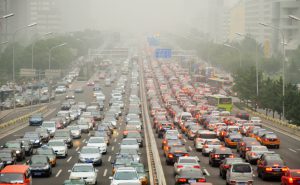Guest post by Tao Wang, resident scholar in the Energy and Climate Program at Carnegie Tsinghua Center for Global Policy
The 12th Five-Year Plan’s goal of building 82 new airports by 2015 will increase China’s airport network by nearly 50%. The majority of these airports will fly shuttles for passengers located in remote cities of China to hubs that connect to other major destinations. But as Chinese airlines are forced to cut prices to compete with the rapidly growing high-speed railway network, the answer is not more airports, but better-developed transportation networks.
With more than three-quarters of China’s existing airports already running a deficit, the focus on airport construction is misguided. The high-speed railway construction boom since 2002 has intensified pressure on existing airports. After the opening of the Beijing-Guangzhou line in December 2012, China’s 9,000- kilometre high-speed rail network is now the world’s longest. China’s goal is to extend it to16,000 kilometres by 2020.
Existing airports already struggle to compete; some coastal cities now even request government officials fly rather than travel by train for business trips in order to boost local airport use. Opening even more airports will only make the problem worse.
The Civil Aviation Administration of China (CAAC) is the government body that oversees the expansion of China’s airport network. It argues that China needs to expand its airport network to catch up with the United States and other economies, comparing China’s 180 airports to the 700 in Brazil and 19,000 in the United States.
But the CAAC is looking at the wrong numbers. For example, it compares the number of commercial airports in China to the number of flight facilities in other countries, a broad category that includes helipads in the United States. While Brazil may have more than 700 airports, only 28 served over one million passengers in 2011 — China had 53. In fact, the number of China’s large airports is much closer to that of the United States. In 2012, only 62 US airports handled more than two million passengers boarding annually. In 2011 (the last year for which data are available), 43 Chinese airports reached the same level.
In addition, Beijing, the largest Chinese air hub, boards almost twice as many passengers as Atlanta, the largest US hub. China’s airport network therefore comes close to equalling that of the United States in terms of major airport hubs. And it is important to understand the broader context: the US passenger railway network is undeveloped compared to China’s extensive railway network, which also includes a growing number of high-speed lines.
The Chinese authorities should take note of the financial struggles smaller US airports currently face. Beyond the 62 major airport hubs mentioned above, many US airports have been running increasing deficits since 2002. The overall level of debt reached almost US$800 million in 2012. There is no sign of recovery for these smaller airports and this is a dilemma that China can avoid.
Airport construction is not only a bad economic investment — it also has adverse impacts as China struggles to reduce carbon emissions and pollution. High-speed rail, the main competition to air travel, emits less carbon dioxide per passenger. Requiring electricity rather than kerosene, high-speed rail travel can also help China decrease dependency on foreign oil and the associated susceptibility to price fluctuations and supply disruptions.
High-speed rail is already edging out regional flights and airports, with Shanghai starting to offer combined flight and rail tickets for onward travel to nearby cities. If other major cities follow suit, regional small airports will be further marginalised.
This sort of integration between air and ground transportation is actually an efficient way for China to expand its transportation networks while reducing carbon emissions. Air travel between China’s main hubs continues to remain profitable for the airports and operators. More high-speed rail links between provincial capitals would maximise China’s transportation structure while minimising unnecessary flights with low passenger flow. Most importantly, it would reduce the carbon footprint of medium-range inter-city transportation.
What China needs is not more airports but smarter integration of its different transportation networks.




